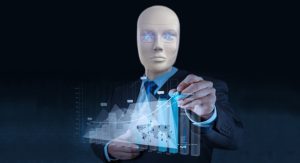 It may have come as a bit of a shock — and an embarrassment — to technologists and human resources specialists alike when an artificial intelligence recruiting engine being tested by Amazon to help sort job candidates was discovered earlier this year to be systematically shunting aside women.
It may have come as a bit of a shock — and an embarrassment — to technologists and human resources specialists alike when an artificial intelligence recruiting engine being tested by Amazon to help sort job candidates was discovered earlier this year to be systematically shunting aside women.
But inevitable failings of this sort along the development curve are not even the main reason that “tech and touch” will always be essential parts of uncovering and deploying talent.
You wouldn’t know that both elements are critical to managing talent from the current enthusiasm over technology-driven human resources tools. “People analytics” is a red-hot area of growth: According to Bersin, a research arm of Deloitte, 69% of companies surveyed built analytics-driven HR databases last year.
Moreover, I can personally attest that many early-stage investors aren’t even interested in talent management companies that are anything short of pure technology plays.
But two words in the general description of talent manager’s most critical resource – “human capital” – explain why we can never get to a point where, as one of the “people familiar with the (Amazon) effort” described it, “They literally wanted it to be an engine where I’m going to give you 100 resumes, it will spit out the top five, and we’ll hire those.”
That word is: “human.”
No matter how good people analytics tools get – and as artificial intelligence, machine learning, and especially predictive analytics advance, they will continue to get very good – the human element will always be indispensable in our business, my end of which is to provide a leading marketplace for high-end, independent talent to the Fortune 500.
Very simply, certain human qualities – central to corporate success – can never be captured in an algorithm or a computer assessment.
One is cultural fit. No matter how strong an individual’s skillset and career credentials or how closely they match the specifications for a job or consulting role, we all know of situations where face-to-face meetings and discussions reveal almost instantly that, for example, a hard-charger won’t mesh into a laid-back environment, or a professional with traditionalist views of office life into a startup.
Personality and temperament aren’t likely to show up in an algorithm either. Frankly, getting along is more important than going along in pursuit of team or corporate goals and objectives, and personal chemistry can’t be judged via electrons alone.
Then there’s judgment. Sure, it can be gauged through any number of evaluation tools these days. But it’s not something that can truly be known until someone has been observed on the job.
PREMIUM CONTENT: Which routine tasks should be automated or outsourced?
Finally, there’s the other side of the equation: not just matching people to companies, but representing both parties. In the midst of a pitched and intensive war for talent, a big part of our process is selling the company itself. And some people – especially the kind of senior professionals whom we represent and help integrate into our clients’ workstreams – just don’t like being reduced to an algorithm.
They are in a position to choose the assignments they want to take, and tend to prefer to work with humans, to take advantage of their own experience to interact and ask questions before they take the leap.
In the same way, Barry Asin, president of SIA, an independent research firm focused on staffing and workforce solutions, has pointed out that a human can not only do a better job bringing out the intangibles in a professional but also in presenting them to a client.
As Barry puts it, “We’ve found that a technology bot can never be as a persuasive as a human when you’re competing to attract – or sell through – the best of the best.”
But it shouldn’t be a shock to anyone that there is not only room, but an imperative, to apply both tech and touch. Tech to efficiently sort and screen and match talent’s capabilities with enterprises’ needs and objectives. Touch to take the personal measure of humans on a human level, and to persuasively represent companies and their culture in the same way.
Artificial intelligence is getting more intelligent all the time. But the more it’s developed and applied, the clearer it becomes that it will always be just that: artificial. In a people business – which is what talent management is – you will always need people.








